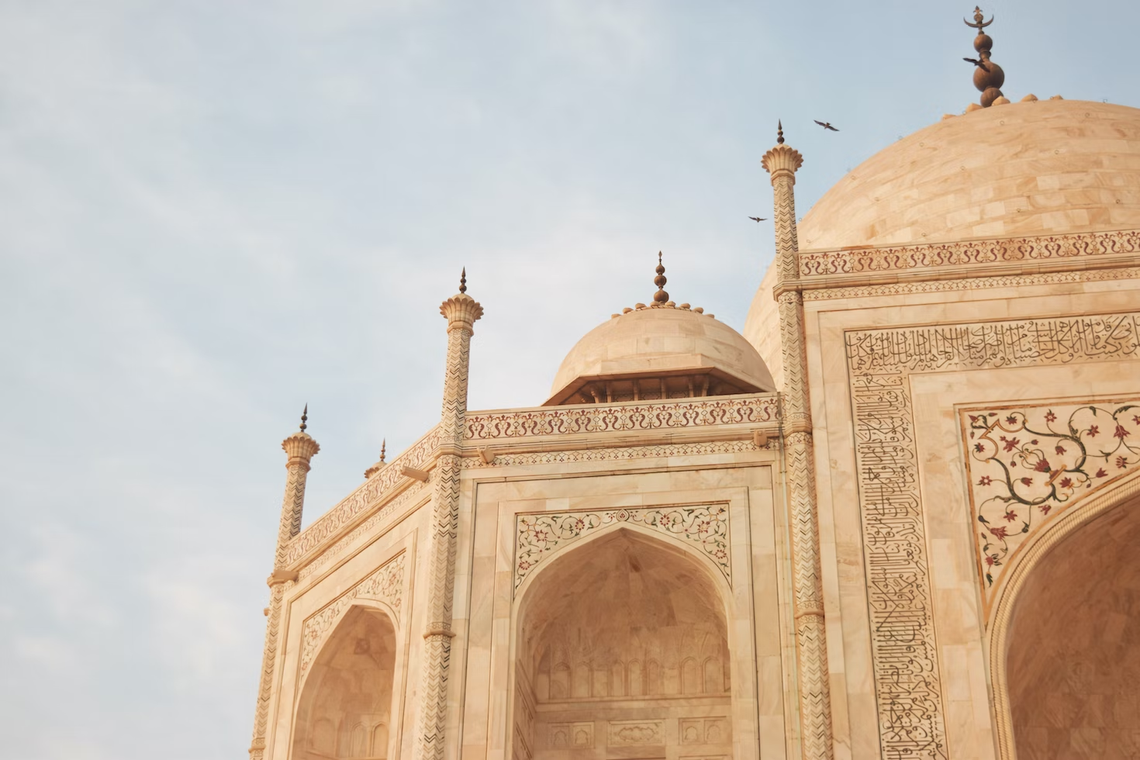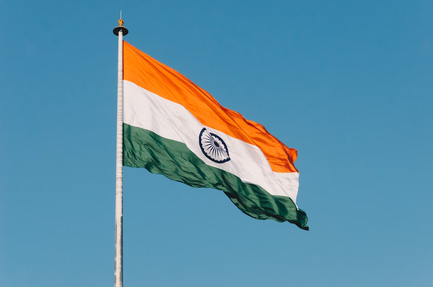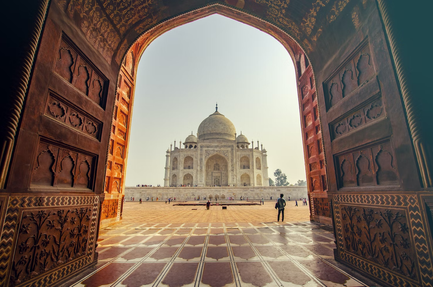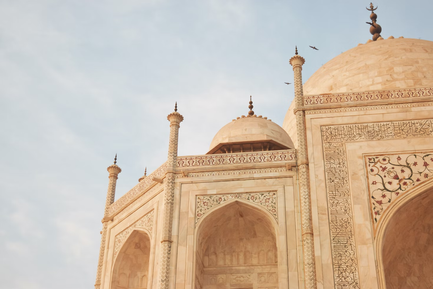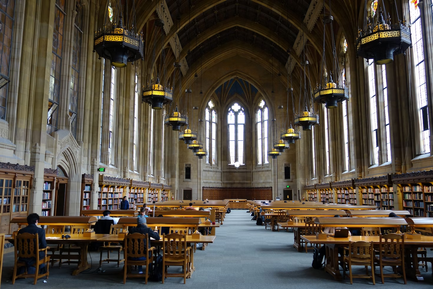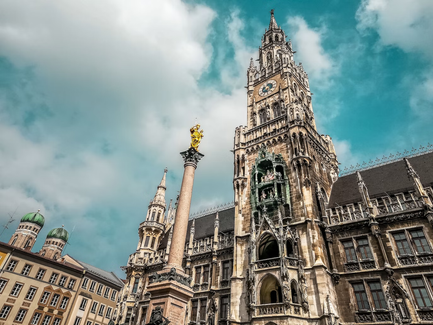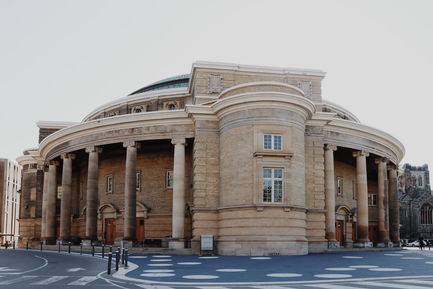Universities in India operate according to the Western model, therefore they have absorbed the experience of the leading universities from all over the world. By the number of education institutions, India ranks second in the world after China[1]. The strongest programs are in engineering, in technical and in natural sciences. The development of higher education is one of the priorities of the government. In 2020, the "New Educational Policy" was adopted, which resulted in more and more interdisciplinary programs appearing in universities. Public universities differ in admission requirements and fees. The average price for undergraduate studies is 1,436 USD/year, for Master's degrees it is 3,405 USD/year.
List of the best universities in India
Items 1-6 of 1 994
Advanced searchIndian Institute of Technology Delhi
Indian Institute of Technology Bombay
Indian Institute of Technology, Madras
Indian Institute of Technology Kanpur
Indian Institute of Technology Kharagpur
Advantages of universities in India
- English. English is an official language of the country, and therefore a language of instruction. It is also the language of everyday communication. Therefore, learning all the ins and outs and adapting to life in a new exotic country will be easier. You have to keep in mind that English is not spoken equally well everywhere in the country, though.
- Technical and engineering specialties. The best universities in the country are institutes specialized in high-tech industries, such as the Indian Institute of Technology Bombay, the Indian Science Institute, and the Indian Institute of Technology Madras.
- Affordable MBA programs. Six Indian business schools are ranked in the global top-25 according to QS[2], while tuition fees there are on average lower than in the top universities in the US or Europe. For example, a 10-month MBA at the French business school INSEAD costs 95,013 USD[3], and at the Indian Institute of Management Ahmedabad — 44,838 USD for two years, more than 4 times less.
Disadvantages of universities in India
- Specific learning style. Studies are conducted using “rote learning.” This is a method of memorizing by repetition. This approach may be unusual for those who are accustomed to discussions in seminars. Rote learning is bad for the development of analytical skills and does not teach you to think independently.
- Competitive environment. The best Indian universities have high competition for admission. And those who manage to pass, face high competition in the class. Getting higher grades than other students becomes more important than knowledge itself. This creates unfavorable psychological conditions[4].

Requirements for admission to universities in India
| Type of study | Age | Duration | Min. cost | Avg. cost | Level of language proficiency | Examinations |
|---|---|---|---|---|---|---|
| Colleges | 18+ | 0.5-3 years | 102 USD/year | 359 USD/year | B2 | TOEFL 78+ |
| Bachelor's | 18+ | 3-5 years | 154 USD/year | 1,436 USD/year | B2 | TOEFL 78+, SAT 1200+ |
| Master's | 21+ | 1-2 years | 299 USD/year | 3,405 USD/year | C1 | TOEFL 95+, GRE 300+ |
| MBA | 21+ | 1-2 years | 2,298 USD/year | 12,785 USD/year | C1 | TOEFL 95+, CAT 205+ / GMAT 600+ |
| Doctoral | 22+ | 3-5 years | 874 USD/year | 13,229 USD/year | C1 | TOEFL 95+, RET 122+ |
Unlike many universities in Europe, the legalization of documents is not required. Classes at universities are in English, so you need to provide a B2-C1 level language certificate. For certain fields of studies, you’ll need to pass specialized examinations such as GRE, or GMAT — for admission to the MBA program. Some universities conduct interviews and their own entrance tests. You can submit documents through the centralized application system DASA.
Types of educational institutions
"Institutes of National Importance" are considered to be the most elite universities in India. As a rule, it is the most difficult to enroll there, because they are the innovative educational centers of the country. The federal government and each state make sure that educational institutions have proper accreditation. The University Grants Commission (UGC) regularly publishes lists of fake universities — these institutions award diplomas that are recognized neither in India nor in other countries.
| Type of educational institution | Features | Number of institutions |
|---|---|---|
| Vocational colleges |
| 1300+ |
| Government degree colleges |
| 134 |
| Private colleges |
| 40000+ |
| Central universities |
| 54 |
| State universities |
| 425 |
| Deemed Universities/deemed-to-be-universities |
| 125 |
| Private universities |
| 375 |
| Institutes of National Importance |
| 130 |
Colleges in India
In colleges, students receive purely practical skills and knowledge that allow them to start working in their field fast. Such programs do not prepare for an academic career. Moreover, colleges are not the most popular education option in India. It is believed that colleges are mostly for lower-class students with no outstanding abilities. However, the situation is changing: in 2020, the New National Policy was adopted. It will provide colleges with more funding, skilled personnel, and resources.
Nevertheless, even now, some college programs are popular, such as the Engineering programs at "Industrial Training Institutes," as well as programs in the service industry and tourism. The duration of studies is anywhere from a month to three years, after which you can start working in your profession or continue your education at a university. It costs about 36 USD/year.

Public and private universities
Public universities are more numerous. The choice of training programs is wider, but it is more difficult to enroll there, especially to the Institutes of National Importance. In India, this sector is considered the most prestigious. The cost of education there is lower than in private universities because they receive funding from the government. The quality of the infrastructure depends on the university, but, as a rule, there are no problems: the development of the higher education system is one of the state’s top priorities.
Private universities are a rapidly growing sector of the Indian education system. Over the past ten years, more than 250 private universities have been opened in the country due to the growing demand for higher education[5]. In many such universities, the admission requirements are less strict, while the tuition fees, on the contrary, are higher — above 1,197 USD/semester. Therefore, for students, private universities remain a backup option: first of all, everyone tries to get into one of the state universities. Programs can be general or narrowly focused, such as the Business Process Services program at Manipal Academy of Higher Education or Real Estate And Urban Infrastructure at Amity University.
There are many small private universities in the country that prepare students for careers in specific professions. Education in such institutions may be shorter. The activities of private universities are under the control of state commissions, and their autonomy is limited: they do not have the right to open their own colleges and out-of-campus educational centers.
The quality of education is similar in both types of universities. The requirements for the selection of the teaching staff are equally strict: a PhD degree, experience, and approval of the commission. However, practice shows that a degree from a state university is still valued by employers a little more: since it is more difficult to get there, confidence in the skills of the applicant is also more grounded.
Best universities in India
- Indian Institute of Technology Bombay (IITВ). The campus is located in Mumbai, the financial center of the country. IITB is an Institute of National Importance. This status means that the university plays an important role in the training of highly qualified specialists. It is now one of the best in the field of engineering. It is included in the list of 200 best universities in the world according to QS[6].
- Indian Institute of Science (IISc). It is a public university with more than a century of history, located in Bangalore. This is where India's high-tech industry is located. IISc is the country's center for advanced scientific and technical research. The strongest areas are Natural Sciences, especially Chemistry and Biology, as well as Computer Science. The Times Higher Education named IISc the best university in the country[7].
- Indian Institute of Technology Delhi (IITD). Institute of National Importance, an important science and technology center in India. Included in the top-200 universities in the world[8]. Studying at this university is a chance to join one of the ongoing studies. IITD researchers regularly publish papers in the fields of Technology, Biochemistry, Physics, and Information Technology.
- Indian Institute of Technology Madras (IITM). The campus of the university is located in Chennai, the "automobile capital", a large industrial center of India. The factories of many international companies such as Hyundai, Ford, and Mitsubishi are located here. IITM is an Institute of National Importance, a major center for fundamental and applied scientific research, technological innovation, and industrial consulting. It is among the top-300 universities in the world according to the QS rating[8].
- Indian Institute of Technology Kanpur (IITK). Founded in 1959, IITK from the very beginning has been working closely with renowned American universities such as the California Institute of Technology, Princeton, and the University of Michigan. The American experience allowed the institute to quickly take a leading position among the universities of India. Most of IITK's research today is in bioengineering and aerospace technology.
Free universities in India
There are no free tuition seats for international students at universities in India. However, you can fund your studies with scholarships:
- Indian Council for Cultural Relations scholarships. There are three main scholarship programs: General Scholarship Scheme, Cultural Exchange Program and Education Exchange Program, and ICCR Scholarship Scheme for Music and Dance. You can make additional inquiries about the selection criteria and conditions through the Indian mission in your country. This is also where the applications are accepted. There is also a program from ITEC (Indian Technical and Economic Cooperation) organization. It is available primarily for programs in Banking, Entrepreneurship Development, Small Business, Management, and Diplomacy. ITEC covers tuition, flights, meals, and study materials[9].
- Study in India Scholarship. Organization Study in India in collaboration with the Ministry of Education and the Ministry of Trade and Industry pay a scholarship of 3,500 USD USD/year. It covers the costs of tuition, accommodation, meals and entrance fees for the entire duration of studies. The scholarship is available to everyone except doctoral students. Details can be found here.
Full list of scholarships and grants for studying in India is posted on the website of the University Grants Commission.

Interesting facts about universities in India
- The Indian Institute of Technology in Kanpur (IIT) was the first university in the world to have its own airfield. The kilometer-long runway was built with the assistance of nine US universities. Kanpur Airport, or Kalyanpur, is used by aerospace engineering students. Now the flight laboratory of the faculty has three aircraft at its disposal and studies their flight properties[10]. In addition, students can participate in the glider flight program.
- India is home to one of the oldest universities in the world — Nalanda. Between V-XII centuries, it was a Buddhist university and monastery, where ten thousand students and more than two thousand teachers lived and worked. For eight centuries, Nalanda was an important scientific center, where scientists from China, Tibet, Mongolia, Turkey and other countries came. The modern University of Nalanda was opened in 2014[11].
- Indira Gandhi National Open University is the largest in the world by the number of students. Now over 7 million people study there. The university has a virtual campus for distance learning students.
- Shaastra — the annual technical festival of the Indian Institute of Technology Madras. The students hold complete responsibility for its organization, and it is the only festival in the world that has received ISO certification for compliance with the Quality Management System.
-
Some Indian universities have mottos in English, Latin or Sanskrit:
- या विद्या सा विमुक्तये — “True knowledge liberates” (National Institute of Technology Goa);
- “A place to learn; A chance to grow” — Vellore Institute of Technology;
- Luceat Lux Vestra — “May Your Light Shine” Loyola College, Chennai.
Choosing an academic program is a very complex, energy- and time-consuming process.
We will help you determine what to expect from studying abroad, analyze your experience, and select the most suitable programs.

